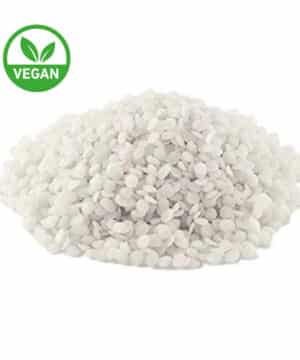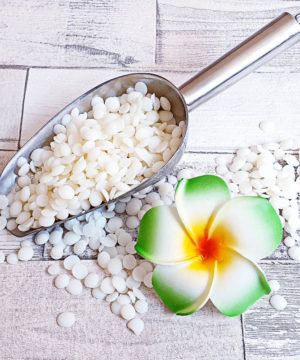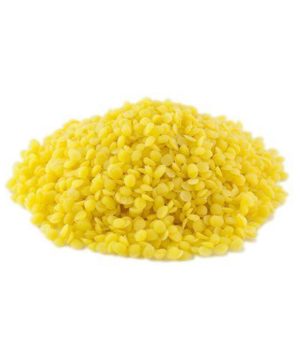Rapeseed or rapeseed candles: a sustainable and versatile alternative
Oilseed rape, also known as rapeseed, is a crop widely grown in the Netherlands and other parts of Europe. The yellow-blooming crop often graces fields in spring, and the plant is valued not only for its oil-rich seeds, but also for its many sustainable uses. One of these uses is making candles from rapeseed wax (rapeseed wax). In recent years, this vegetable wax has been gaining momentum as an alternative to traditional candles, which are often made from kerosene (a byproduct of the petroleum industry) or beeswax (a valuable byproduct of beekeeping). In this text, we discuss the properties, production, benefits and uses of rapeseed or rapeseed candles, as well as their role in a more sustainable future.
From rapeseed to candles rapeseed wax
Rapeseed is grown in various parts of Europe, particularly in countries such as Germany, France and also in the Netherlands. The plant is known for its bright yellow flowers that cover fields in spring, and for the seeds from which rapeseed oil is extracted. This oil has numerous uses in food, cosmetics and biofuels. When the oil is pressed from the seeds, a residual product remains from which rapeseed wax can be obtained. This is a plant-based and biodegradable material that lends itself well to the production of candles.
The process begins with harvesting the seeds, which are then dried and pressed to extract oil. The oil is then refined and processed in several steps to be turned into wax. This wax has a fairly low melting point and is somewhat similar to soy wax, which is also a popular vegetable alternative to kerosene. The final result is a firm, creamy-white wax that is ideal for making candles.
Advantages over kerosene
Traditional candles are mostly made from kerosene, a petroleum product that can emit smoke and soot when burned. Although kerosene candles are inexpensive and common, they raise questions about sustainability and health. Petroleum is a fossil resource, meaning its extraction can have a significant carbon footprint and contributes to the depletion of non-renewable resources. Burning kerosene can also release pollutants into the air.
Rapeseed wax, on the other hand, is plant-based and renewable. It grows quickly, and local cultivation and processing can drastically reduce carbon emissions compared to products that must be imported from outside Europe. In addition, the wax is biodegradable, which means that leftover candles are less harmful to the environment. Finally, rapeseed wax hardly emits any soot when burned, which is beneficial for indoor air quality.
Health and usage benefits
In addition to environmental benefits, rapeseed wax also offers health benefits. Because this wax is plant-based and contains fewer chemical additives, it is often less likely to cause allergic reactions or irritations than some kerosene candles. In addition, the melting point of rapeseed wax is relatively low, so candles made from rapeseed wax burn up more evenly and gradually. As a result, they tend to last longer, making them an attractive alternative for both domestic use and commercial applications, such as in restaurants or wellness centers.
The low melting point also means that rapeseed wax-based scented candles often disperse scents better. Essential oils can evaporate more easily at lower temperatures, filling the room with aroma in a more subtle and efficient way. This property makes rapeseed wax popular among makers of scented candles, who strive for an optimal fragrance experience.
Local cultivation and short chains
An important aspect of sustainability is the origin of raw materials. Because rapeseed thrives in the temperate climate of northwestern Europe, it can be grown and processed relatively close to home. This significantly reduces transport and thus CO₂ emissions. Moreover, local cultivation stimulates the regional economy and contributes to biodiversity. Rapeseed fields provide an important food source for bees and other pollinators, which is ecologically very valuable.
So by choosing candles made from locally grown rapeseed wax, you contribute to supporting local agriculture and reducing polluting (intercontinental) transportation. This makes these candles an attractive option for people and businesses looking to reduce their carbon footprint.
Processing and design
Rapeseed wax is relatively easy to process into candles, both on an artisanal and industrial scale. The wax has good adhesion to glass, which makes it suitable for container candles in jars or glass holders, for example. This gives makers the opportunity to develop all kinds of creative designs and add different scents and colors. Thus, every candle lover can find a candle that suits his or her interior and preferences.
In addition, rapeseed wax combines well with other sustainable materials, such as wooden wicks or cotton wicks that have not been bleached or chemically treated. This makes for an all-natural candle with a rustic look. For those looking for a craft experience, there are also DIY kits available that allow you to make your own rapeseed candles. These are ideal for hobbyists who love crafting and want to add a personal touch to their interiors.










Reviews
There are no reviews yet.